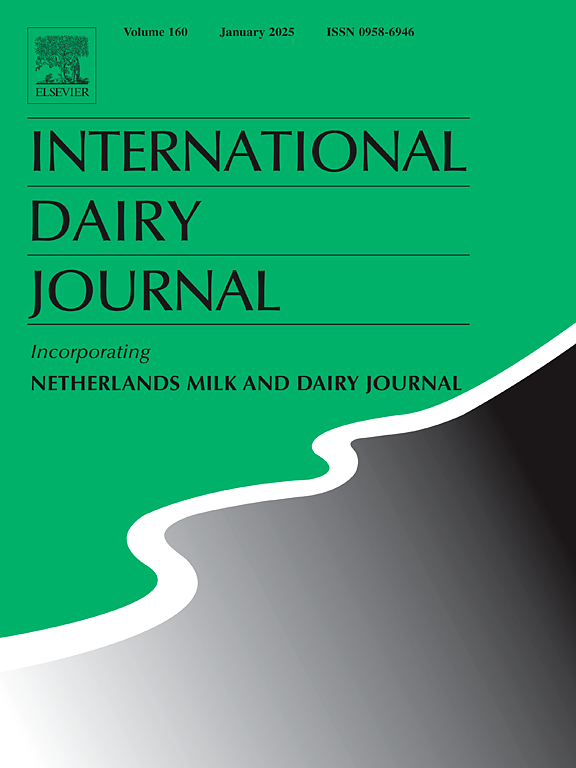Elemental profile of traditional, commercially available Greek cheeses
IF 3.4
3区 农林科学
Q2 FOOD SCIENCE & TECHNOLOGY
引用次数: 0
Abstract
Greece produces significant quantities of cheeses that do not hold any designation such as Protected Designation of Origin. The elemental profile of these Greek cheeses was determined. The collection scheme aimed to represent cheeses not assigned to any designation category, originating from both islands and mainland of Greece, manufactured from different milk types as well as various manufacturing procedures. A total of 102 cheeses were purchased from the market, classified into hard, semi-hard, soft, spread, and whey cheeses, and analyzed using inductively coupled plasma mass spectrometry. Nutritional values of the cheeses were calculated based on the concentration of selected essential elements namely Cr, Cu, Fe, Mn, Mo, Se and Zn. The findings of the study indicate that examined cheeses can be regarded as safe, given their low levels in analyzed heavy metals, and on the other hand, they cover a considerable percentage of the dietary recommended intake for elements like Cr and Zn. The results pointed out that discriminant analysis differentiation based on cheese- and milk type is possible. A database regarding the elements of these cheeses was created. The present study attempted to promote less known local cheeses to Greek and European consumers.
传统的、市售的希腊奶酪的基本特征
希腊生产大量的奶酪,没有任何名称,如原产地保护名称。测定了这些希腊奶酪的元素特征。该收集计划旨在代表来自希腊岛屿和大陆的不属于任何指定类别的奶酪,由不同的牛奶类型和不同的制造程序制造。从市场购买的102种奶酪,分为硬奶酪、半硬奶酪、软奶酪、涂奶酪和乳清奶酪,使用电感耦合等离子体质谱法进行分析。根据选定的必需元素Cr、Cu、Fe、Mn、Mo、Se和Zn的浓度计算奶酪的营养价值。研究结果表明,考虑到所分析的重金属含量较低,被检测的奶酪可以被认为是安全的,另一方面,它们涵盖了相当大比例的铬和锌等元素的膳食推荐摄入量。结果表明,基于奶酪和牛奶类型的判别分析是可行的。建立了一个关于这些奶酪成分的数据库。目前的研究试图向希腊和欧洲消费者推广不太知名的当地奶酪。
本文章由计算机程序翻译,如有差异,请以英文原文为准。
求助全文
约1分钟内获得全文
求助全文
来源期刊

International Dairy Journal
工程技术-食品科技
CiteScore
6.50
自引率
9.70%
发文量
200
审稿时长
49 days
期刊介绍:
The International Dairy Journal publishes significant advancements in dairy science and technology in the form of research articles and critical reviews that are of relevance to the broader international dairy community. Within this scope, research on the science and technology of milk and dairy products and the nutritional and health aspects of dairy foods are included; the journal pays particular attention to applied research and its interface with the dairy industry.
The journal''s coverage includes the following, where directly applicable to dairy science and technology:
• Chemistry and physico-chemical properties of milk constituents
• Microbiology, food safety, enzymology, biotechnology
• Processing and engineering
• Emulsion science, food structure, and texture
• Raw material quality and effect on relevant products
• Flavour and off-flavour development
• Technological functionality and applications of dairy ingredients
• Sensory and consumer sciences
• Nutrition and substantiation of human health implications of milk components or dairy products
International Dairy Journal does not publish papers related to milk production, animal health and other aspects of on-farm milk production unless there is a clear relationship to dairy technology, human health or final product quality.
 求助内容:
求助内容: 应助结果提醒方式:
应助结果提醒方式:


